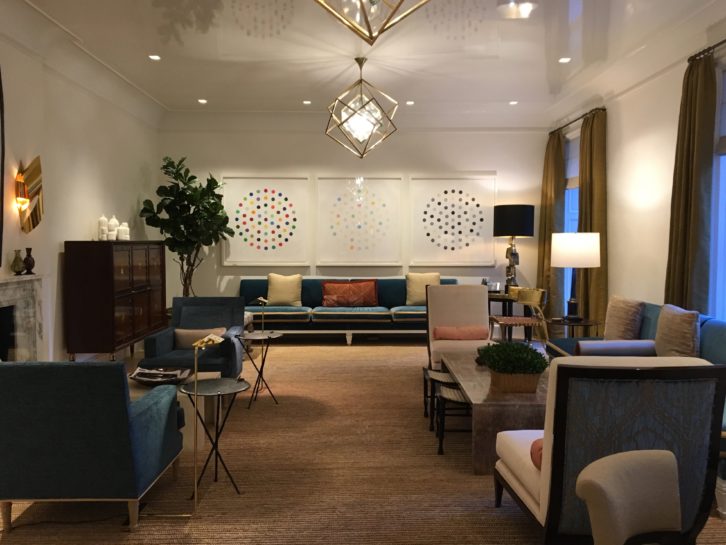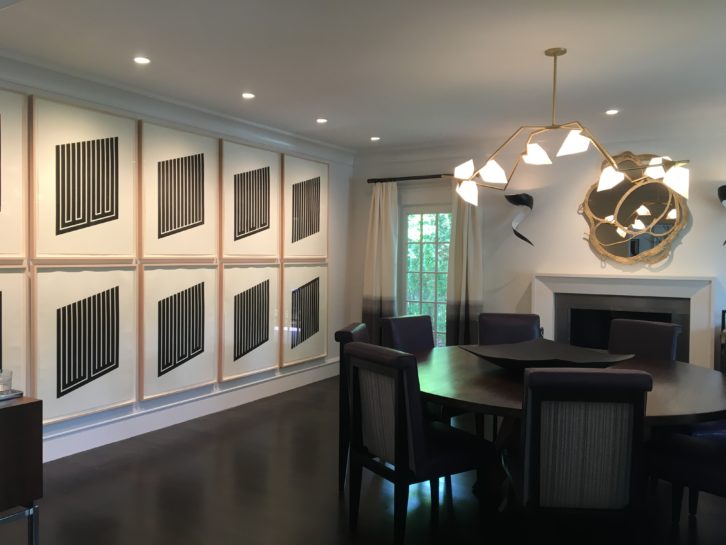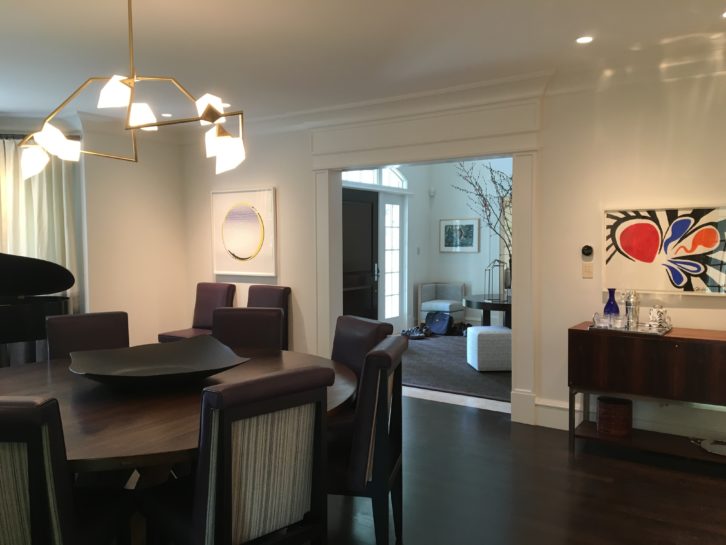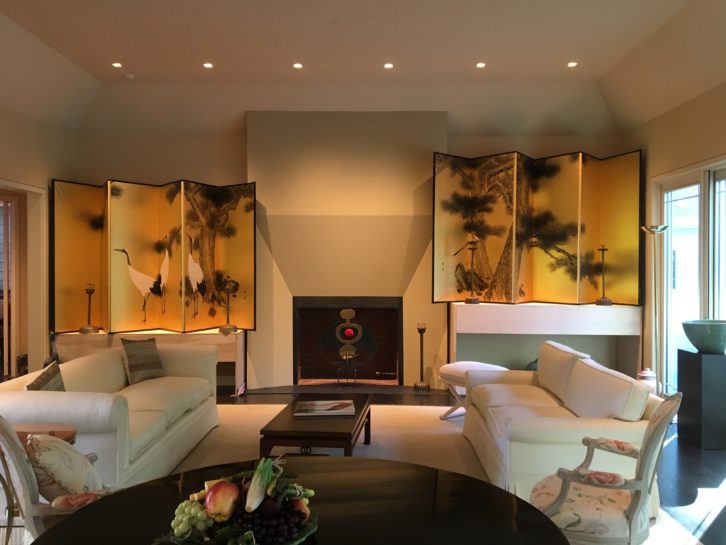The Art of Lighting Design
Veteran lighting designer Peter Romaniello, IALD, has some sage advice for AV integrators getting into the game.
ANTHONY SAVONA ⋅ MAR 26, 2020

Lighting plans should accommodate recessed lighting and also decorative lighting. Photos courtesy of Conceptual Lighting.
If you’ve been paying any sort of attention to industry pundits over the past few years, you know that they’ve been encouraging AV integrators to expand into lighting, with a fervor not seen since stereo shops took the plunge into home theater. The reasons are many, not the least of which is a new source of profitability. But being involved with lighting also provides earlier access to new home structures, and it offers yet another high-end service to stave off the waves of trunk slammers and DIY disruptors in the marketplace.
At the same time, any AV integrator who has ventured into the category can attest to the fact that lighting also brings its own complications, which is one of the reasons industry buying groups and associations — as well as lighting manufacturers themselves — have begun providing extensive training and certification programs.
Lighting designer Peter Romaniello, IALD, owner of Conceptual Lighting, is one of the experts these groups often task with integrator training. He has been in business for more than 22 years and, unlike many of his peers, he welcomes integrators into the fold.
“I find that there are there are three different types of projects,” Romaniello says. “One: The client says, ‘No, we don’t need a lighting design.’ Two: They might have a lighting plan and they say, ‘We might need somebody to check this out, but you, Mr. AV person, you go ahead and do it.’ And three: There are projects where they say, ‘We’re hiring a lighting designer.’”
Although the final option would be best for him, Romaniello realizes that those kinds of jobs are extremely rare.
“Throughout all constructed projects, and residential in particular, only about 7 or 8 percent of all projects have a lighting designer,” he says. “That means over 90 percent of all projects have somebody else doing lighting. My philosophy has always been that that if lighting is being done better on 20 percent or 30 percent more of those projects because the AV integrators are handling it, then it raises the water level on the importance of lighting design on all projects. So I feel that AV guys coming in is a good thing for the lighting industry, and the reason why I teach about it.”

Think about lighting the walls first, which creates visual interest and contrast.
Lighting Design vs. AV Integration
Though supportive, Romaniello does offer the following caveat: “There is a big difference between an AV integrator who is doing some level of lighting plans versus an actual professional lighting designer. Most AV integrators have years and years of experience and training to become what they are, and now there’s a perception that just because they can start selling lighting product now, that they are taking over the lighting design industry, which could not be farther from the truth.
“What we don’t want to have happen is a situation where the integrator does some very basic lighting layout and calls it lighting design and is excited because they can sell expensive fixtures. I am sure integrators would be offended if I went out there and started marketing services as an AV integrator; just because I know how to program systems doesn’t make me one.”
Speaking of selling expensive fixtures, that is a key difference between AV integrators and lighting designers, as professional LDs cannot sell or supply products. But that, too, can be another opportunity for an improved client lighting experience.
“As a full member of the International Association of Lighting Designers (IALD), we do not sell or supply products,” explains Romaniello. “We don’t make a markup on product; we have no financial gain for saying what we say. That is the distinction between an actual lighting designer and somebody who is a lighting consultant, or somebody who says they do lighting design and sells products.
“I think that one of the benefits to having the AV integration market involved in lighting at some level is that AV integration is looked at as an FF&E [Furniture, Fixtures, and Equipment] product, and lighting fixtures are still looked at as part of a construction budget, where it’s based on some completely B.S. allowance or some minimal coupon that the builders can throw toward it.
“If an AV integrator goes to a homeowner — and they typically are hired by the homeowner as opposed to being brought in by the other trades — they have the ear of a client. So if the integrator says, ‘We’re going to also do the lighting because it enhances everything else,’ and if the client buys into that, then that’s good because it affords better product overall than what typically would get used in a semi-custom or custom home.”
Professional Tips
Once an integrator has the technical aspects of lighting down, there is still the art of it to master — things that go far beyond the dots on a lighting plan or spec’ing an expensive fixture. “In a residential application, it’s about creating highlight and contrast,” says Romaniello. “There’s two parts to it — architectural lighting, which is what we do, and decorative lighting, which is usually handled by the interior designer. But you still have to think about it when you’re doing a plan. You can’t just think about the linear fixtures and the recessed lights.”
For comparison, commercial lighting has to cover the basic need of providing enough illumination to make sure work can get done, so it is much more flat. No one wants their home to look flat, so how do you set up an interesting room?
“When you think about really well-balanced sound, it’s not about flat — it’s about height,” says Romaniello. “Highs and lows and different ranges and certainly lots of speakers in various locations. And when you think about lighting, it’s the same thing. It’s lots of little bits and pieces of light in various parts of the room at different levels that add to that overall appearance.”

Focus lighting on vertical spaces as opposed to horizontal ones.
So where does one begin? “You should always start by lighting the perimeter of the room and then work your way inward,” advises Romaniello. “When you think about lighting the walls first, that creates visual interest and it creates contrast. More importantly, when we walk into a room, we don’t look down at the floor and we don’t look at the ceiling. We look straight ahead at the wall in front of us, so paying attention to walls is a really good approach. Plus, walls don’t move — if you design toward furniture, it is going to move at some point. The walls are the bones of the project — you won’t know every single detail of a room, but if you know that there’s a 12-foot-long wall, there’s bound to be artwork on it.
“You have to light that wall and think about it with flexibility, like making sure that all of the fixtures are adjustable not only in terms of how they’re aimed, but also what the beam spreads are. When you think about residential lighting design, nine times out of ten, it’s about doing really good solid techniques over and over again.”
Making matters more difficult is that on new constructions an integrator is only working off the builder’s reflected ceiling plan, which does not provide much information for developing a solid lighting strategy. “Reflected ceiling plans are thought of as the lighting plan, but when you really think about it, that’s only focusing on what something looks like on the ceiling instead of thinking about what it actually does in a room. You have to think past the RCP and think about the effect the light’s going to have on the various things in the room.
“For example, a lot of times a reflected ceiling plan lighting approach is to have a consistent grid of recessed lights in the kitchen ceiling, but that’s the only thing that is symmetrical in the room. The cabinets are not symmetrical, and the layout of the sink and the appliances are not symmetrical, so why should the lighting be symmetrical — just because it looks good on a piece of paper? It doesn’t make any sense.
“If you are only given a reflected ceiling plan from an architect, you should make an immediate request for elevations, sections, and the floorplan — and maybe even the furniture plan. All of those things affect what the lighting is going to be and how it’s going to feel. Getting as much information as you can before you start putting in symbols on a piece of paper is really important.”
Also important: lighting vertical spaces as opposed to horizontal ones. “Vertical spaces could either be walls or cabinets or built-in millwork, or even a mural on a wall,” he adds, “as opposed to a table or a countertop, which is horizontal. You also need to take clues from the architecture. If, for example, you see a plan and it’s got a vaulted ceiling, then that vaulted ceiling is there for a reason. It’s important to the architect, it’s important to the homeowner, and so it should be lit. And that means throwing light up toward that ceiling as opposed to putting a bunch of holes in it, because all that’s going to do is it’s going to shrink the architecture and not do anything to accentuate it.”

Lighting designers have to think past the reflected ceiling plan and think about the effect the light is going to have on the various things in the room.
New Tech, New Challenges
In more than two decades as a professional, Romaniello has seen his share of technology come and go. From the rise of LEDs and the need for energy-efficient lights to the latest tunable white and smart lights of today. Fortunately, things are better today than they were just a few short years ago.
“From 2014 to about 2017, it was the Wild West,” he says. “There was such a great divide between crappy products and good products, and then from good products to great products. What’s happened over time is that the gap has closed and the price has come down.”
The latest trend to hit the lighting world is tunable white light, which Romaniello describes as “the ability to change color temperature, going from something really warm to potentially something really cool, and theoretically anything in between that.”
Tunable white lighting has many attributable features, including re-creating circadian rhythms in the house and, when part of an RGBW system, it can change to potentially millions of colors. For all the hype around it, however, Romaniello warns against over-promising its capabilities.
“Tunable white lighting has gotten confused by people in that it is marketed as something that has health benefits,” he says. “But almost all of the medical research about how tunable white lighting will help with circadian rhythm regulation is in the health care industry and in the commercial environment, where people are subjected to artificial light all day and all night long. In the residential lighting community, we are being told across the board, ‘You’re not doctors, so don’t tell somebody that if they put in this light, they’re going to sleep better,’ because it’s not yet proven at that level. Being cautious about how we promote it is important.”
Until there is enough evidence to sell based on health, however, the color-changing aspect of the lights can provide the attraction. “Recessed lighting structures are not going to change, but over the course of the life of a home, you might change the carpeting, the wall color, or the furnishings and completely shift the color scheme,” says Romaniello. “Having the ability to change the color of light could totally enhance a design change that takes place years down the road.
“I’m really cautious about the ‘typical’ sales aspects of tunable white lighting,” he adds. “You really want to think about it more in terms of having flexibility and how this flexibility and the color of light changes your perspective of the home throughout the day, just as daylight does.”
Forming Alliances
Lighting design is clearly a complex topic, and having an expert resource who can help with questions and offer consults is a valuable asset. As a lighting designer who works with several AV integrators, Romaniello advises those getting into the biz to reach out to their local LD for an introduction, and to make their intentions clear.
“The first thing you should do is tell them that you are going to start offering lighting design services, but it’s going to be for projects where somebody of their caliber would not normally be hired or where the architect says they are not bringing in a lighting designer,” he says. “Just to let them know that you are not going after their work and are certainly not trying to replace them in any way.
“My relationship with AV integrators is reciprocal,” he continues. “If I have a project where somebody is having an issue with the home’s technology, I know there are people I can reach out to. It takes having a lot of comfort in your abilities to be able to know when you can and when you can’t do a job. And if an integrator gets to the point where they can’t, then they should have a good enough relationship with a lighting designer that they feel comfortable to bring them in.”
As a final bit of advice, Romaniello offers: “The reality is that everybody thinks that they can do lighting design. Everybody is going to question what you do, and so you have to combat that by using logic and sound common-sense design, and being able to back up your decisions — not only in terms of the layout and the approach to the design, but also the fixtures you are using and why you’re using those fixtures.
“Just as the integrators are comfortable in backing up their decisions about everything from the AV standpoint, they have to get to that same point with lighting.”
Meet the LD
Peter Romaniello, IALD
When Peter Romaniello, IALD, graduated from the University of Connecticut with a degree in theatrical lighting in 1992, he headed to Broadway where he got a job working with Tony Award-winning designer Ken Billington. While still working in theater, he did some work in architectural lighting, which he loved and that also would afford him, as he puts it, “a little bit more of a normal life.”
He moved out of New York and back to Connecticut with his wife, where he worked for a large distributor, Connecticut Lighting Centers. While he was there, he started up a design department that he ran for three years before he set out on his own with Conceptual Lighting, which has been in operation for 22 years doing high-end residential work and, according to Romaniello, “commercial spaces that are not boring.”
For more information, visit www.conceptuallighting.com.
Lighting Design Dos and Don’ts
- Do pay attention to these four things in fixture selection: color, dimming, distribution — which is a combination of light output and light beam spread — and glare control.
- Do be able to substantiate and defend your design no matter who’s asking.
- Don’t oversell what you can do.
- Don’t be satisfied with just selling a fixture package because you’re able to sell it. You have to feel comfortable that you’re selling a package that is going to completely enhance the home.
Source: Residential Systems (www.residentialsystems.com)